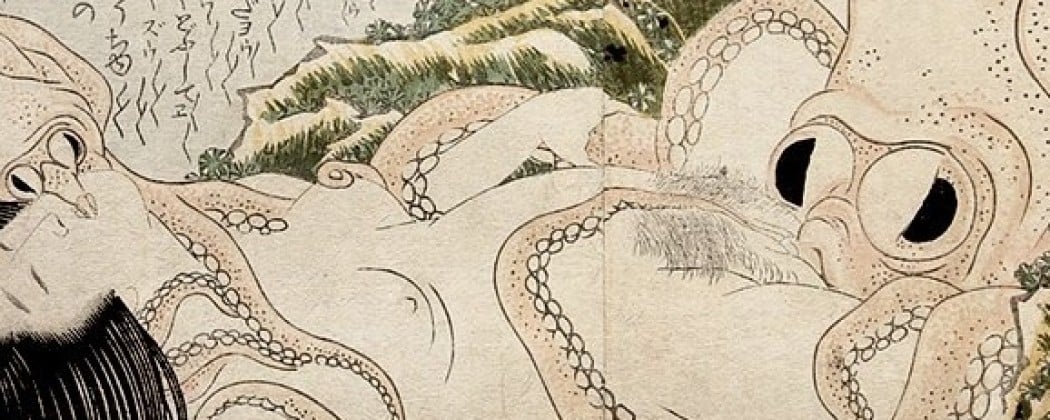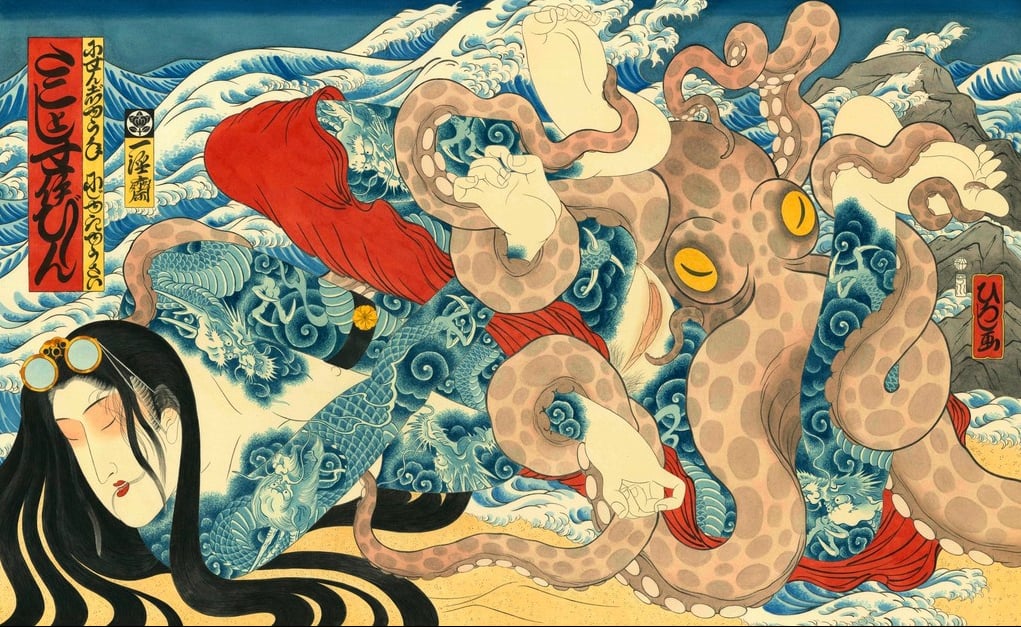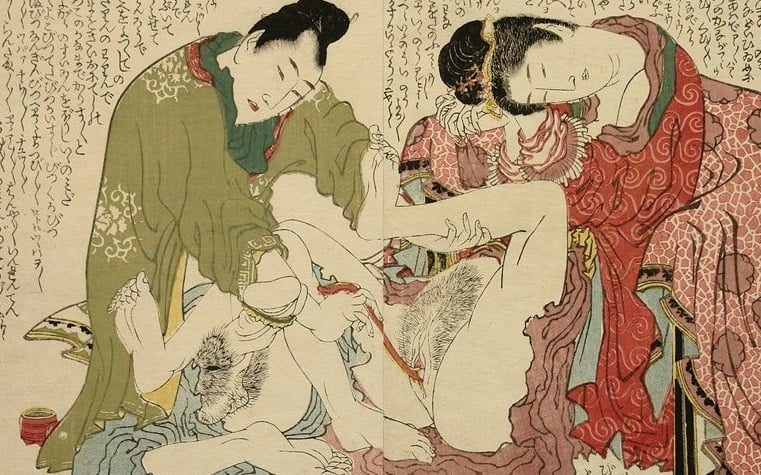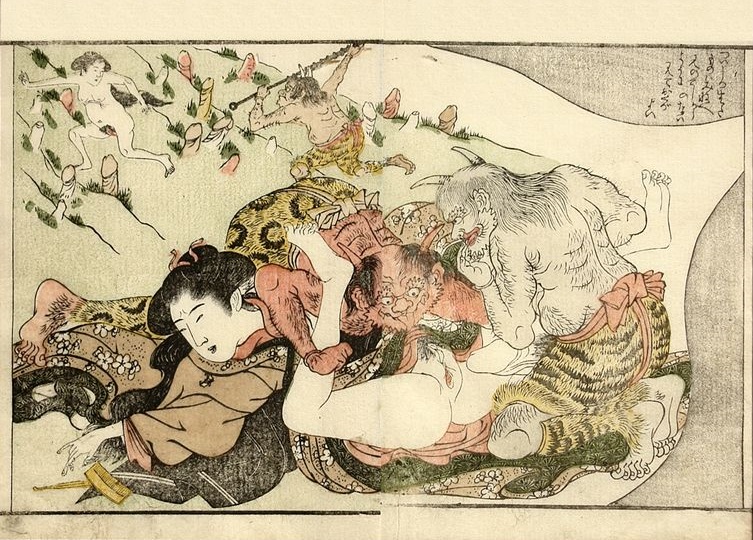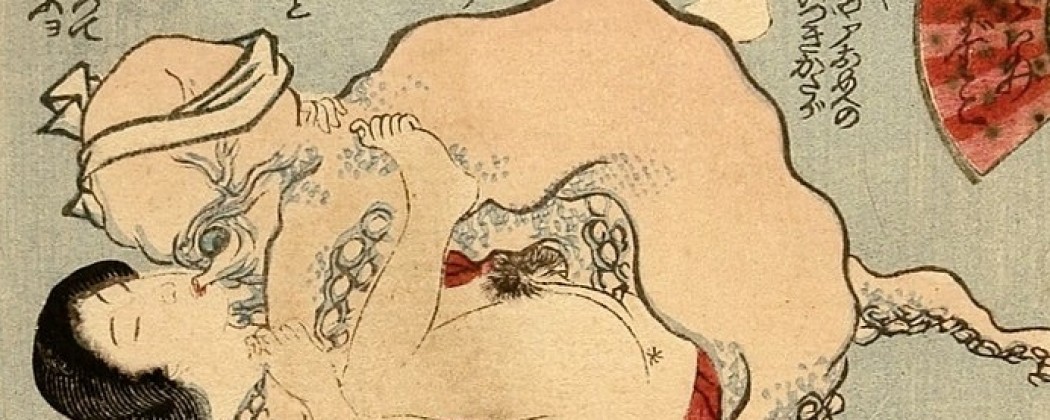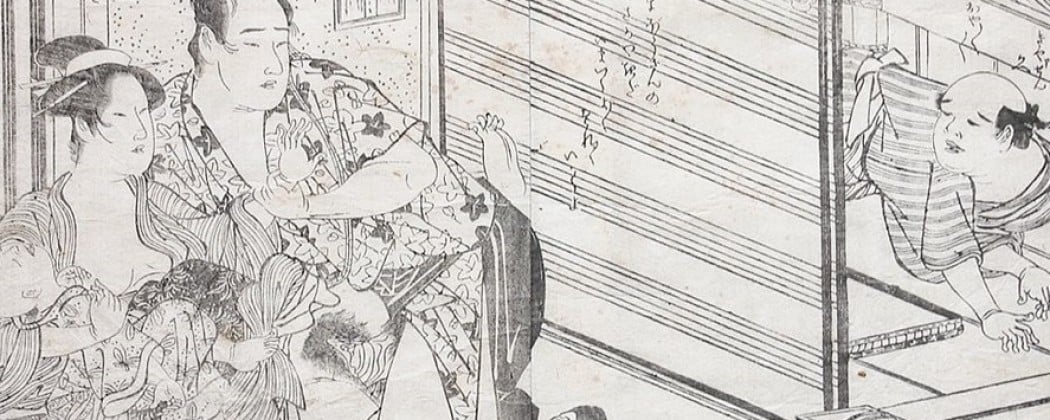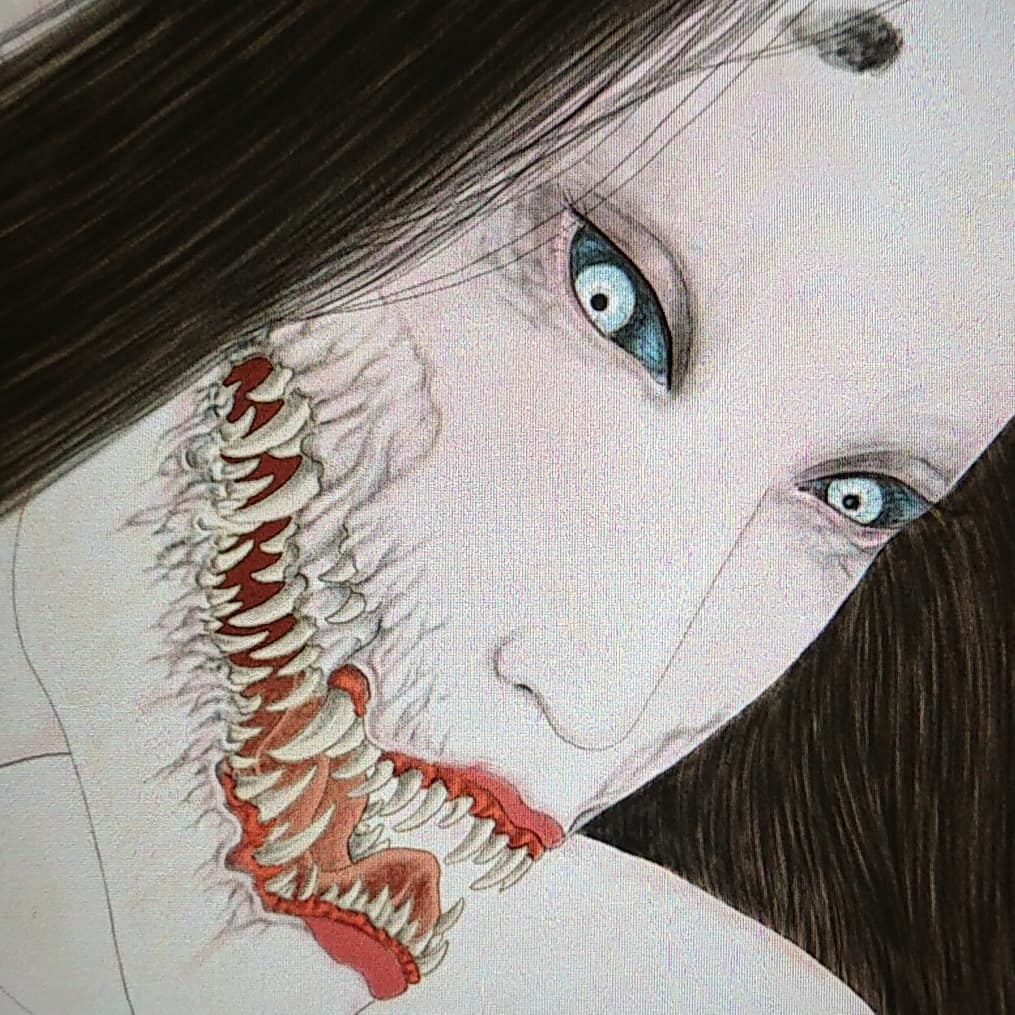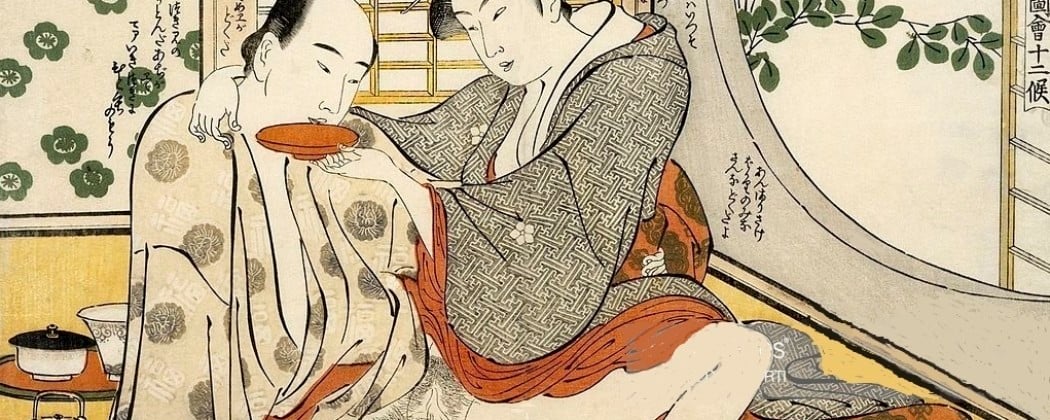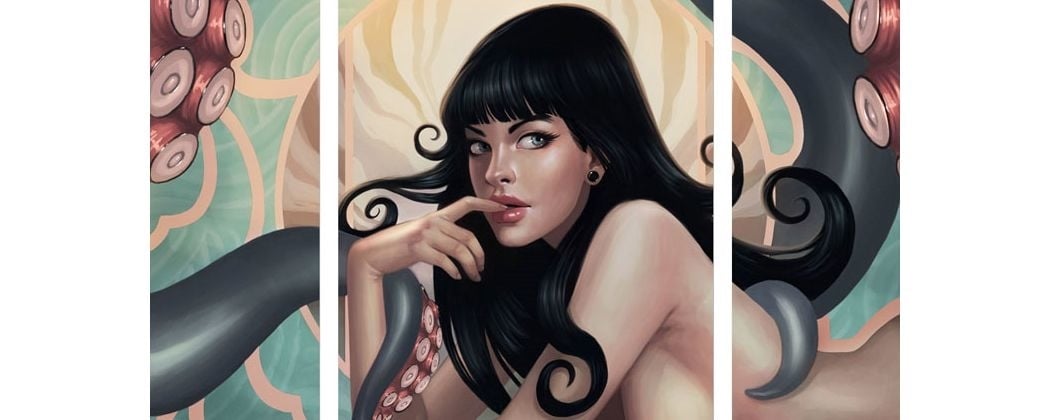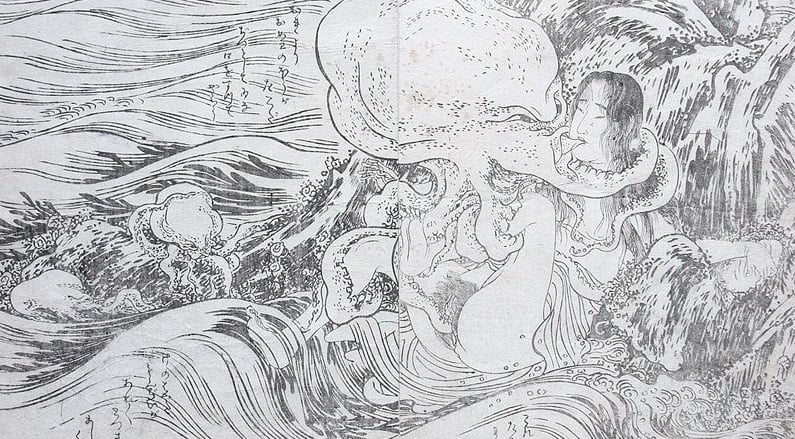
This is the Shuncho piece that inspired Hokusai’s ‘The Dream of the Fisherman’s Wife‘:

‘Diver and Octopuses‘ Series ‘Picture Book: Lust of Many Women on One Thousand Nights (Ehon chiyo-dameshi)’, c.1786.
Katsukawa Shuncho ‘s representation (picture above!) marked one of the first clearly eroticized re-interpretations of the Taishokan tale, a popular sixteenth-century ballad-drama that captivated early modern audiences in dramatizations in the no, kabuki, and puppet theaters, as well as in satirical novels. Accompanied by a humorous dialogue, the scene here shows a female abalone diver receiving cunnilingus from a gigantic octopus, while another smaller octopus approaches from the left.
The text in the image reads:
The diver: “I’m surprised at you, Mr. Octopus, these bad things!”
Octopus: “You are more octopus than me! Shut up for a moment, I want to suck your mouth.”
Little Octopus: “But look, one of Dad’s little arms is taken into the mouth of that sort of hairy monster.”
Katsukawa Shuncho (act. c.1783-1795)
Shuncho emerged around 1780. He was an important artist (educated by the extraordinary teacher Shunsho) who worked in a style similar to his colleague Torii Kiyonaga (1752- 1815). That’s why a lot of their shunga designs have been confused over time.
He was a ‘pictorial poet’ who gracefully portrayed the feelings of physical passion. The sensuous glare that flows from this encounter that permeats the whole body and its environment. This theme dominates Shuncho’s shunga and therefore he stands as one the purest and also one of the most limited of erotic artists.
When you view his prints dispassionately, they show a big similarity. Yet they manage to evade being either dull or repititious. To discover the reasons for this it is necessary to examine the particular aesthetic characteristics of this designs, and reiterate several of the major principles of the ukiyo-e print in its maturity.
Ukiyo-e was an art of the two-dimensional surface. Even when there is a suggestion of true three-dimensional space (as in the drawing of an interior) it is only a suggestion. There is no attempt, even in the few so-callled perspective prints, to create the illusion of three-dimensionality. Thus, the art of the print can be summarized in abstract terms as the division and manipulation of elements: line, color area, pattern, on the flat surface of the prints itself.
It is by the inventiveness with which Shuncho handles these elements that he achieves the variety and vitality in his shunga which make them consistently interesting.
Click here for the most complete translation text on the internet of the iconic ‘The Dream of the Fisherman’s Wife (c.1814)’ by Katsushika Hokusai.
Sources: ‘Erotic Japonisme, the Influence of Japanese Sexual Imagery on Western Art‘ by Ricard Bru
‘The Art of Love in Japan‘ by Tom and Mary Evans

